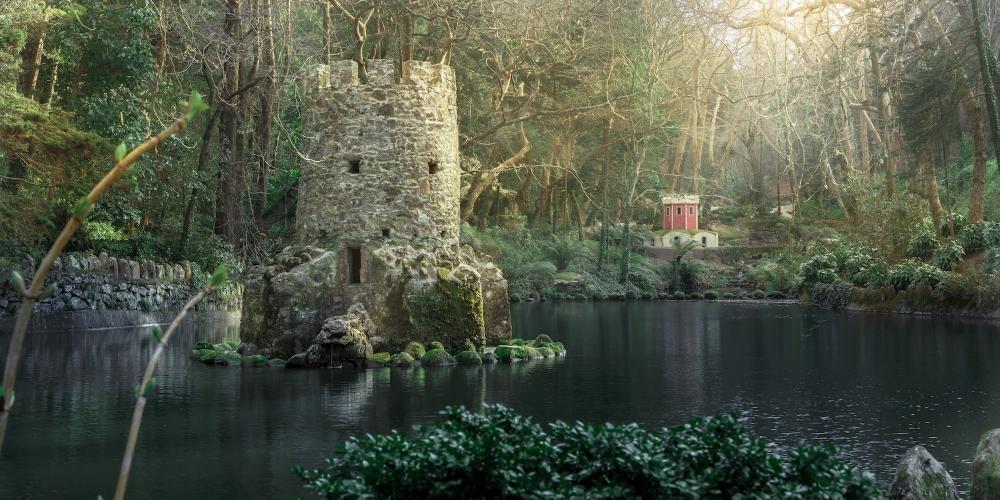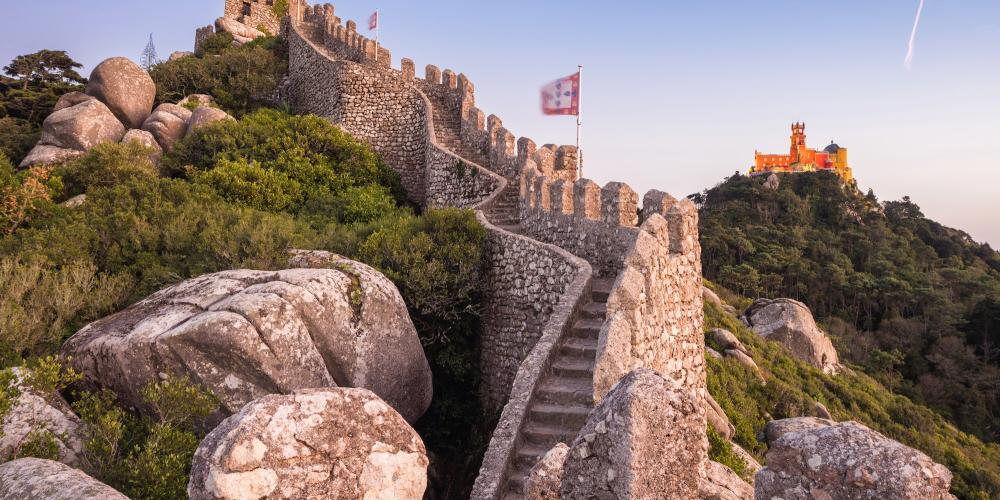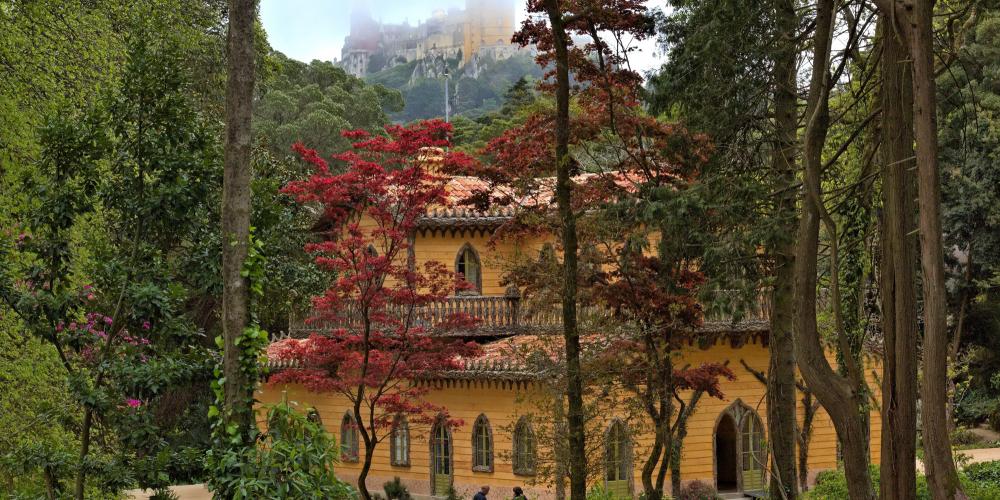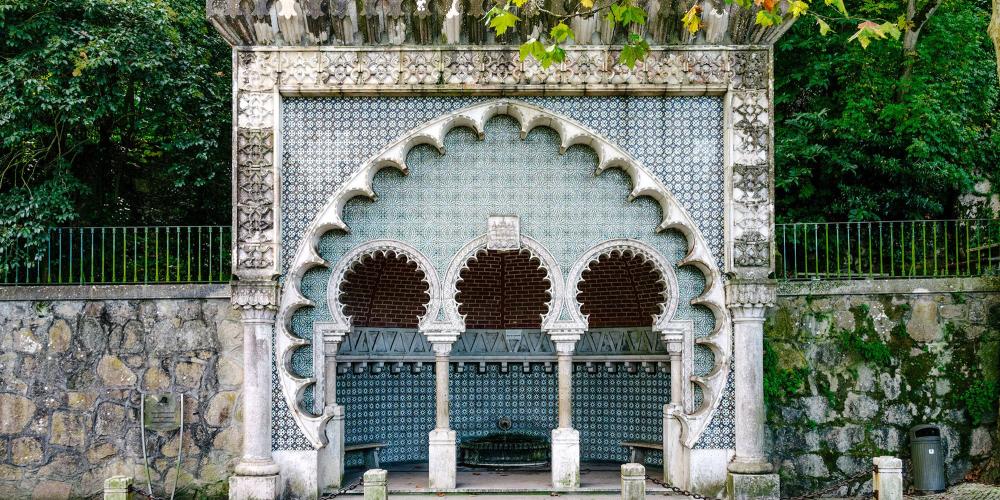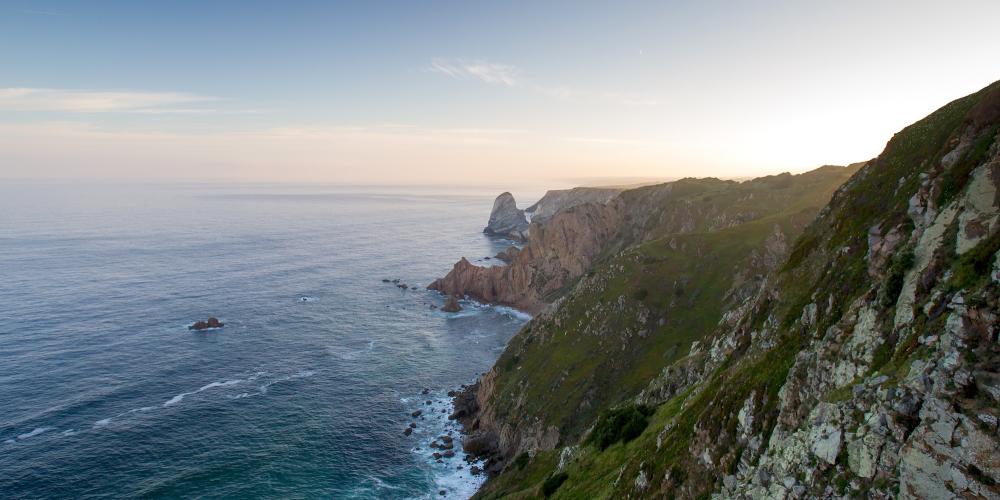Cultural Landscape of Sintra, Portugal

In the 19th century, Sintra became the first centre of European Romantic architecture. King Ferdinand II turned a ruined monastery into a castle—combining Gothic, Moorish, and Renaissance elements—with an accompanying park of trees from around the globe. Other estates were then built with the same designs. The result was a unique combination of gardens, which became a model and influenced the development of landscape architecture across Europe.
Due to the unique characteristics of the Serra de Sintra microclimate, abundant greenery thrives with many local species coexisting with exotic additions from far-off lands. King Ferdinand II restored the area's forests, planting thousands of trees to supplement the native oaks, hazels, hollies, laurels, box and umbrella pines. But it was his singular approach to the mood in the parks that make Sintra so different. These expanses are presented as stages, spotlighting small ponds, nooks, caves, and hidden paths leading harmoniously through the thick foliage.

Wandering through Sintra feels like stepping through the pages of a Portuguese fairy tale. The meandering paths through the gardens lead you on adventures of discovery. Escape to a spiral staircase down into a deep well. Discover ancient hermitages and meditation retreats, where people sought the wisdom of Nature. Uncover rare and exotic plant and tree species from around the world, planted centuries ago by royalty. Admire majestic panoramas from grand balconies looking onto hedge mazes. The various parks and gardens all make for an incredible romantic journey in nature. There are multiple gardens, palaces and castles to explore in Sintra, so it is advisable to spend a few days here to truly appreciate this iconic landscape.
Hillside Palaces and Centuries of Culture
Sintra was the first European site listed by UNESCO as a Cultural Landscape. It encompasses about 960 hectares and forms part of the Sintra-Cascais Natural Park. Located on granite hills less than an hour from Lisbon, its unique and mild microclimate has, since the times of the Muslim occupation, made it a favourite summer resort of kings and aristocrats, who built palaces and planted gardens and forests of immeasurable value. In 1995, the World Heritage Committee recognised Sintra as a unique example of a location which retains significant features of the successive cultures that occupied these lands and that still harmoniously coexist today.

The National Palace of Sintra has been an iconic feature of the Sintra landscape for many centuries. Located in the historic town centre, this palace was inhabited for nearly eight centuries by the Portuguese monarchy and its court. The building combines various architectural styles, among which Gothic and Manueline elements stand out, together with the Mudéjar style—a harmonious combination of Muslim and Christian artistic influences—that are immediately apparent in the exuberant Hispano-Moresque tiling. The collections displayed within the palace also bear artistic witness to the multicultural nature of Portuguese decorative art between the 16th and 18th centuries.
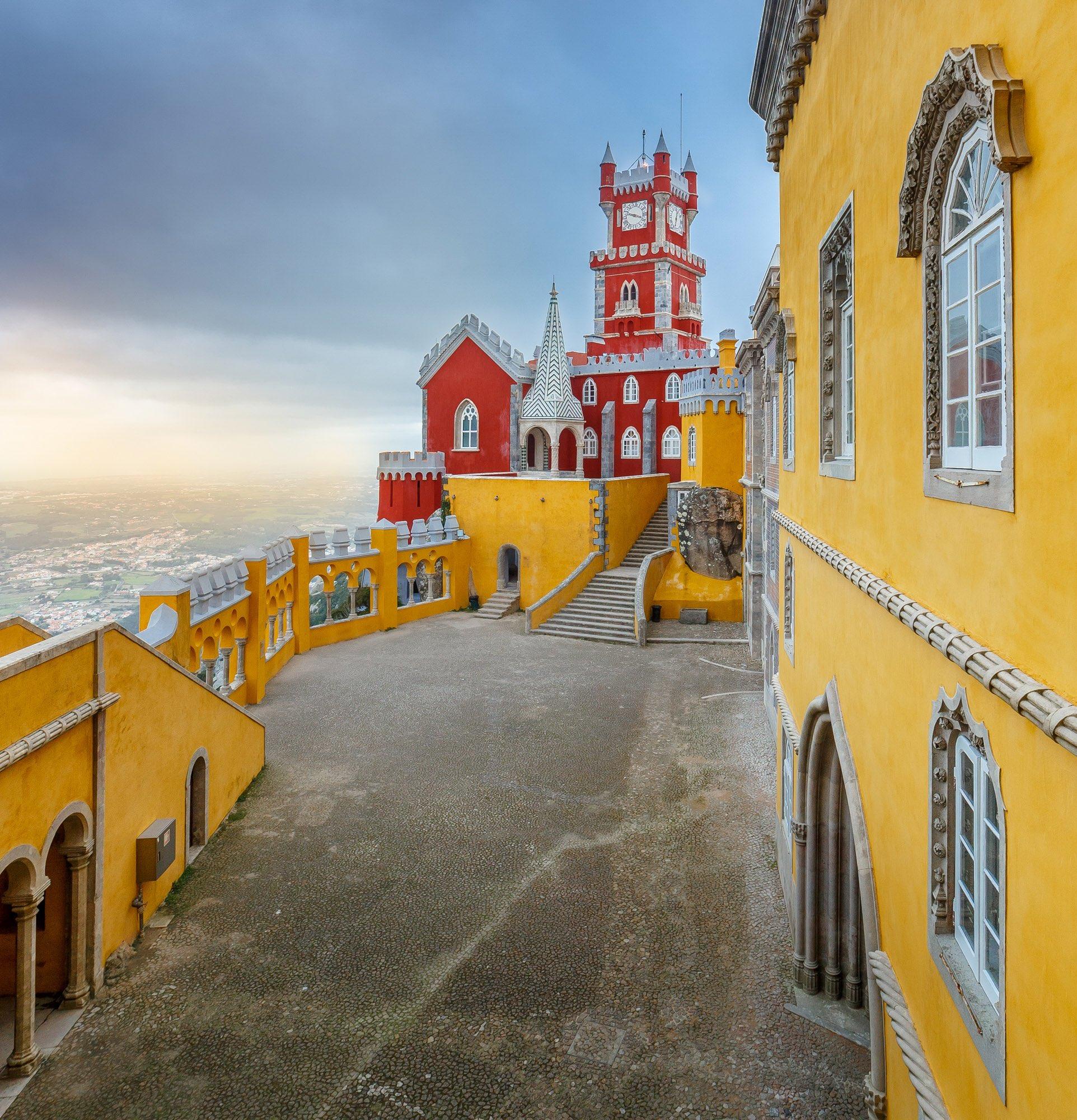
The National Palace of Pena was the result of the creative genius of Ferdinand of Saxe-Coburg and Gotha, a German prince who became the king consort of Queen Maria II of Portugal. The park and palace are Portugal’s greatest example of 19th century Romanticism and the most important element in the Cultural Landscape of Sintra. The palace incorporates Moorish architecture, and the park expresses a search for exoticism through long and winding paths and pavilions framed by tree species from every continent. After visiting Pena, composer Richard Strauss wrote: “Today is the happiest day of my life. It’s the most beautiful thing I’ve seen. This is the true Garden of Klingsor—and there, up on high, is the Castle of the Holy Grail.”
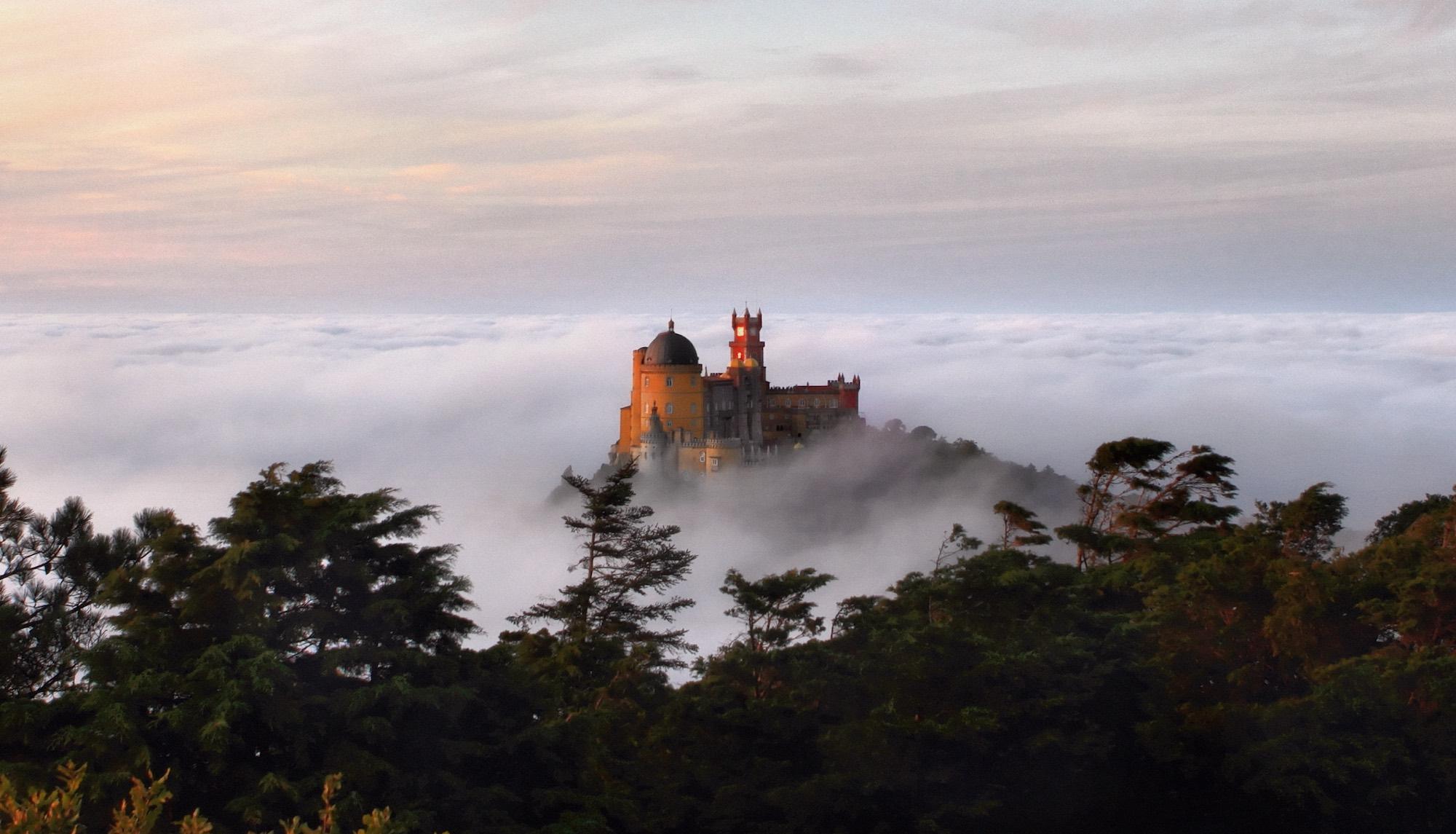
How to Get There
Sintra is 30 minutes from Lisbon and Cascais. By car to Sintra, take the IC19 (from Lisbon) or the EN9 (turning off the A5 motorway to Cascais). By train, take the Sintra Line (CP) from Oriente, Rossio, or Entrecampos stations in Lisbon. If staying in the Cascais area, several bus lines are available. Once in Sintra, buses 434 and 435 will take you from the train station to the many parks and monuments. You can also hike on the many trails, for a more immersive sightseeing experience.
The National Palace of Queluz is halfway between Lisbon and Sintra and accessible by car taking the IC19 (exit: Queluz) or train using the Sintra Line (exit stations: Queluz-Belas or Barcarena—Massamá). There are also buses departing from Colégio Militar in Lisbon, from Falagueira or from Queluz-Belas.
When to Visit
The forested hills of Sintra are constantly changing. Every season offers a different version of the landscape and the parks and monuments are open all year, only closing December 25 and January 1. The monuments tend to be busier during the summer months. Visiting Sintra during the low season allows you to experience the parks and gardens with colourful autumn leaves, the camellia collections of the winter season, or the delicate beauty of spring.
How to Visit
The diversity of parks, palaces, and monuments justifies two or three days. You should plan at least one day for the Palace of Pena and its surrounding park of 83 hectares, which encompasses the Chalet of the Countess of Edla and the Moorish Castle. A comprehensive visit of any of the other monuments require at least half a day.
Sintra’s microclimate is responsible for the particular beauty of these hills, but this also means swift changes in temperature and humidity. Adequate clothing and comfortable walking shoes are recommended.
